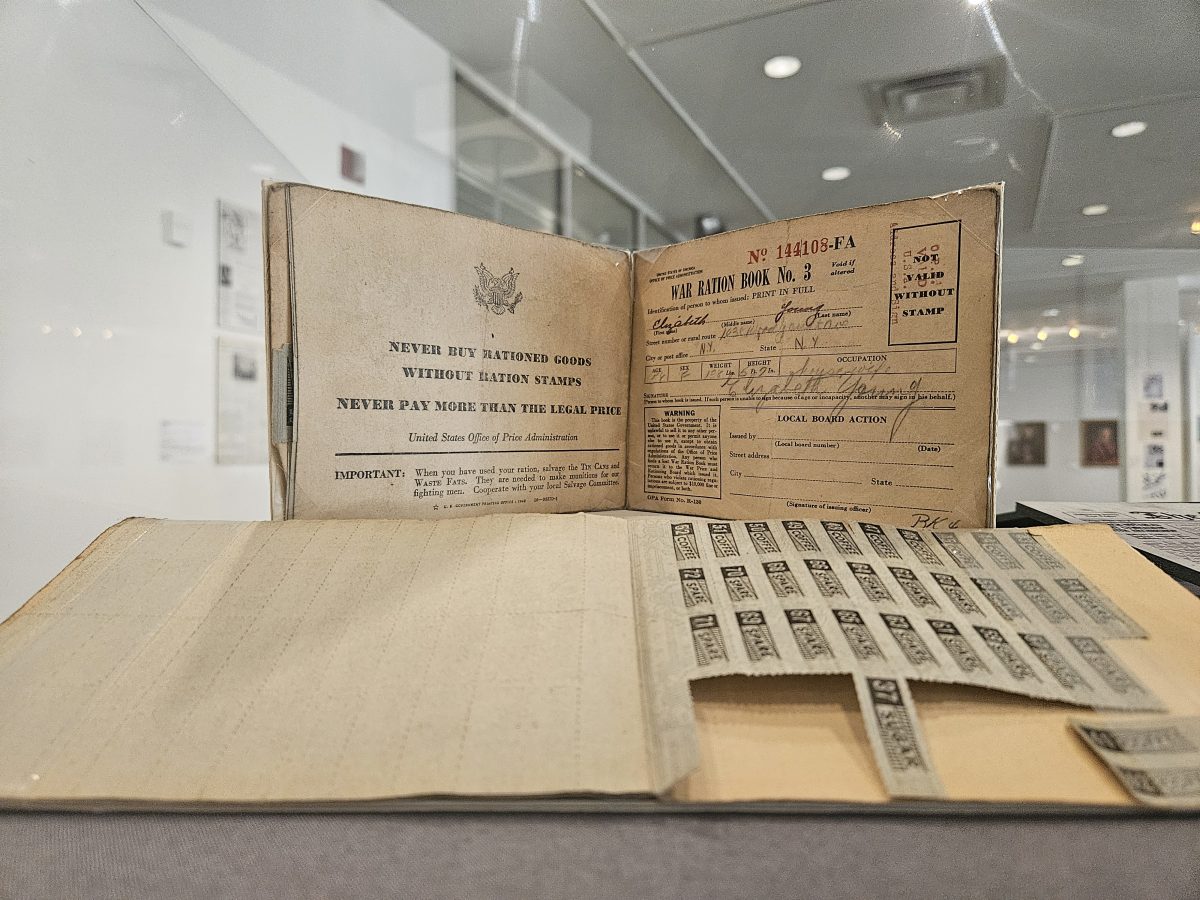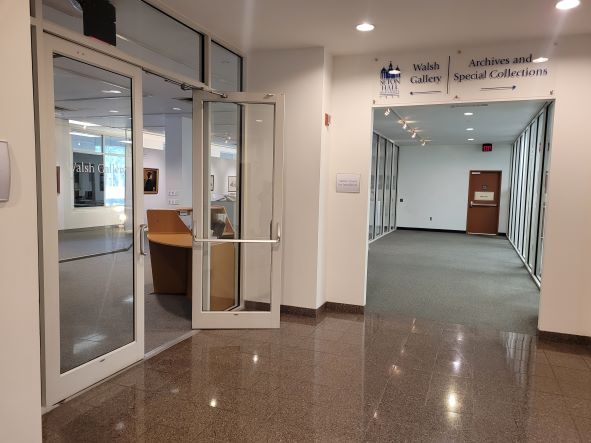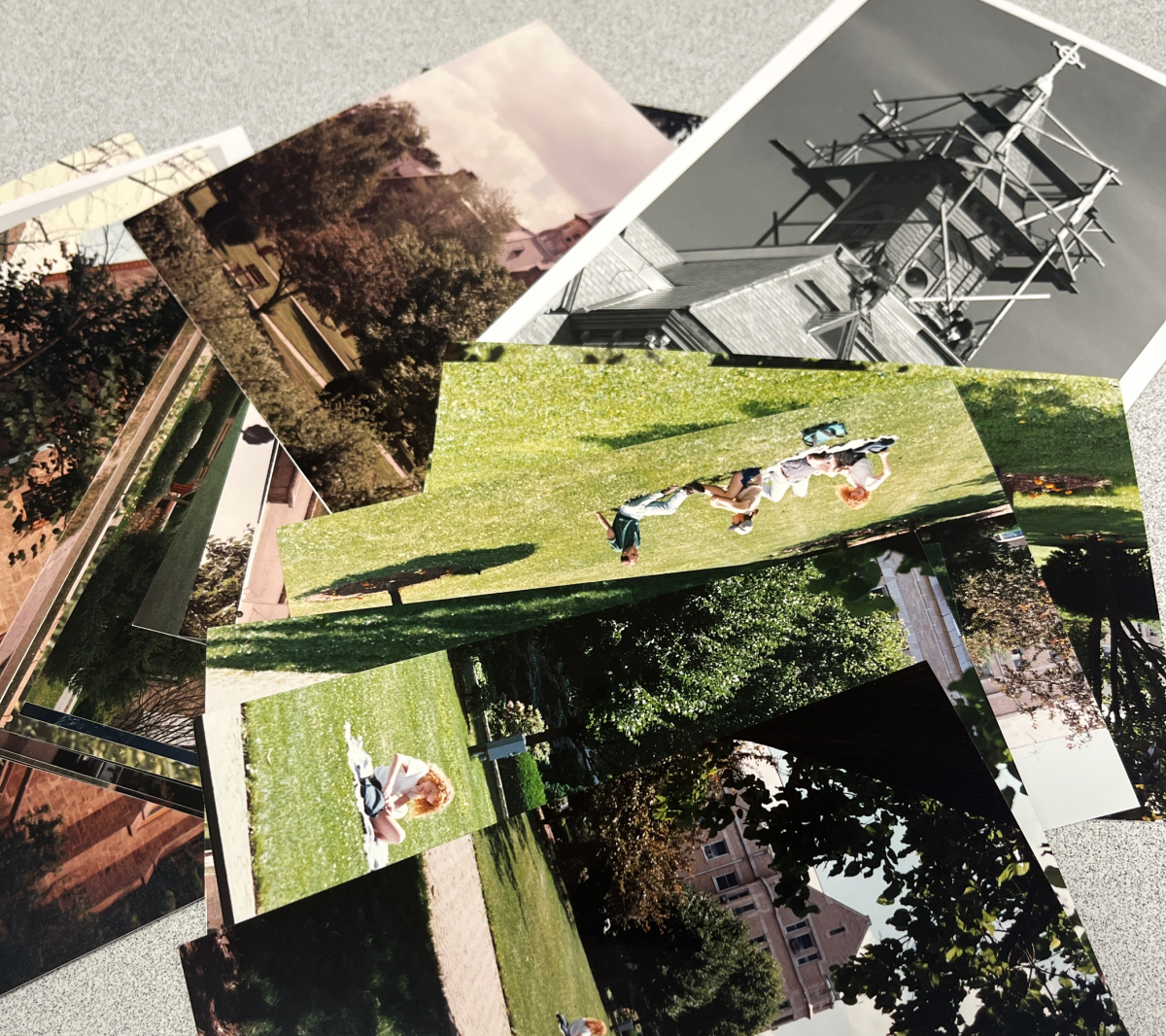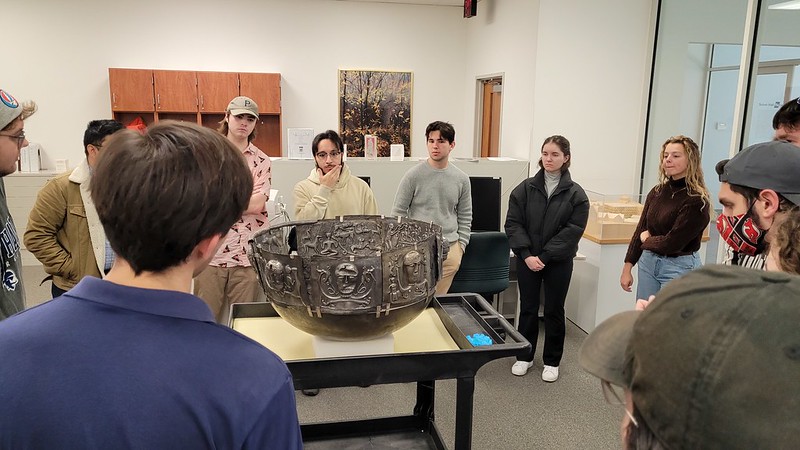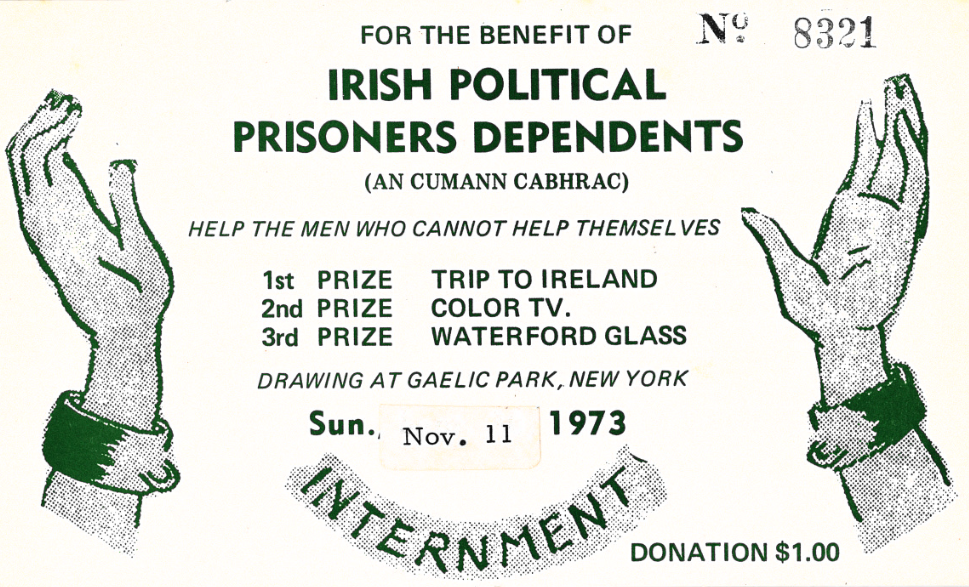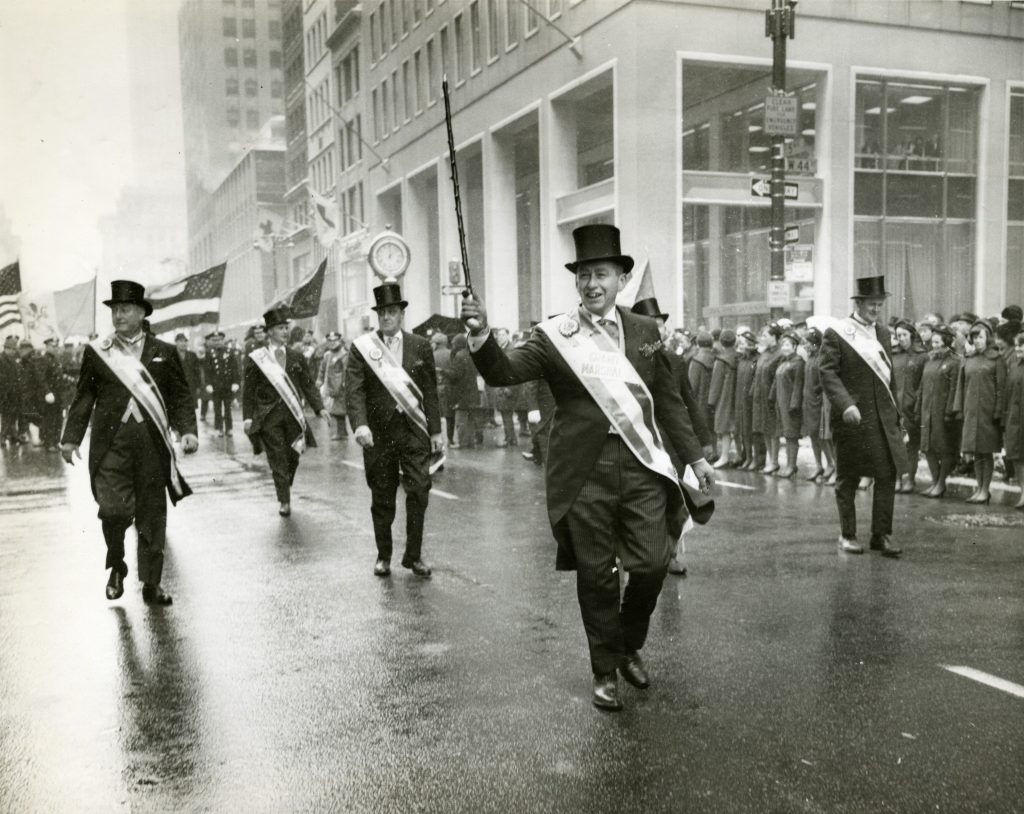Hello! My name is Hope Mahakian and I am a senior majoring in History with minors in Art and Philosophy. This semester, I am an intern with Archives and Special Collections, but this is not my first time visiting the first floor of Walsh Library. Over the course of my four years at Seton Hall, I have gotten the chance to visit and work with Archives and Special Collections multiple times.
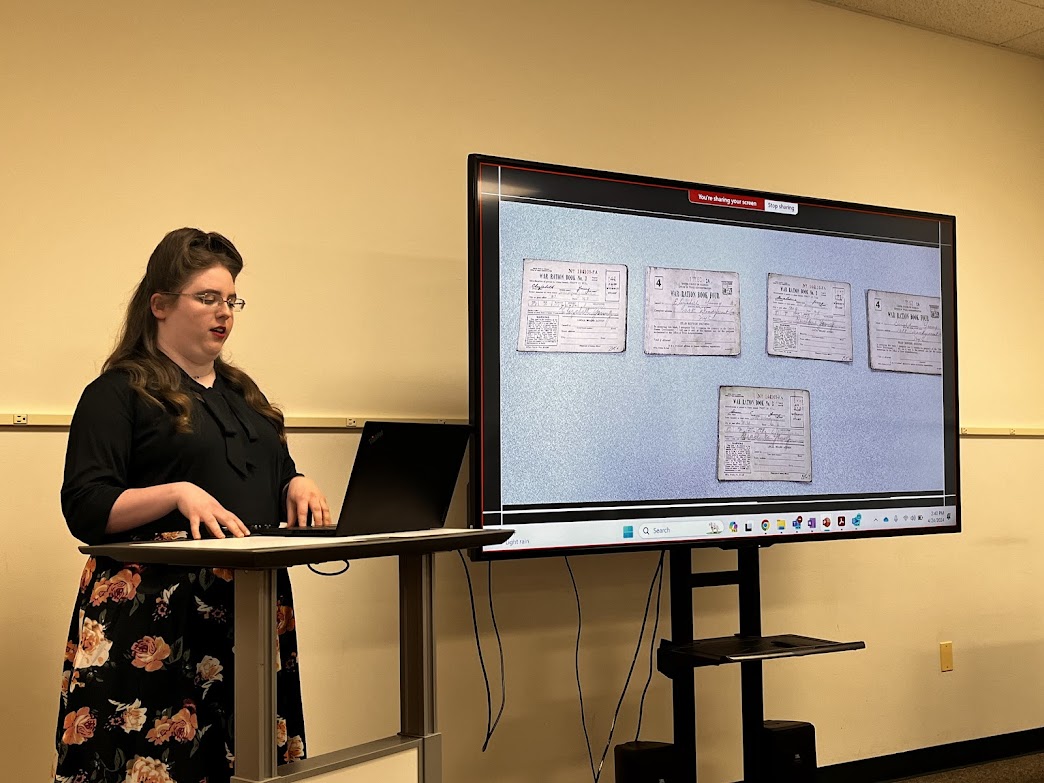
When I first came to Seton Hall, I had zero idea about the world of archives. I knew they existed, but I never considered venturing into one. That all changed the fall of my sophomore year. I was taking a course on Vikings, and my Professor, Dr. Wangerin, decided to take us to Archives and Special Collections. I got to see reproductions of books from the time and even a replica of a detailed cauldron with all its mysteries. The archivists and gallery staff were very kind and discussed how the university had acquired the items. This was my first exploration as to what Archives and Special Collections have to offer, but it would not be my last.
The next few semesters would have similar trips to the archives with different history classes, and each time I got to see something new. From getting to see travel brochures from the 1960s to a lock of Elizabeth Ann Seton’s hair, I was fascinated with what things the archives possessed. The archives have newspapers like The Setonian and student pamphlets organizing a protest against Ronald Regan’s visit to the campus. I was amazed at the wealth of knowledge tucked away.
My next adventure in the archives was the Time Machines project. One of my professors encouraged me to apply, and I am so very thankful she did. I applied and was accepted to research five ration books from World War Two. The archivists were very welcoming and explained to me how they maintain rare books, manage the gallery, and arrange classes to give students a space to explore the past. They were always available to answer questions and provide materials for my research.
One day, I made a realization that the ration book was missing a page of stamps, revealing a part of history that had been forgotten. This realization led me down a path to better understand the women who had owned these ration books, as the absence of stamps revealed what Americans were prioritizing in a time of restrictions. The time I spent researching allowed me to peek back at a time now gone and learn more than I ever would have from a few images online. I got to see and learn so much more from getting to hold and touch the objects.
As I start my internship, I encourage other students to use Archives and Special Collections as the possibilities of what you may discover and what rabbit holes you might fall into are endless. The archives have been a space for me to explore the past, and I hope more students will take the opportunity to visit history in a unique way.
